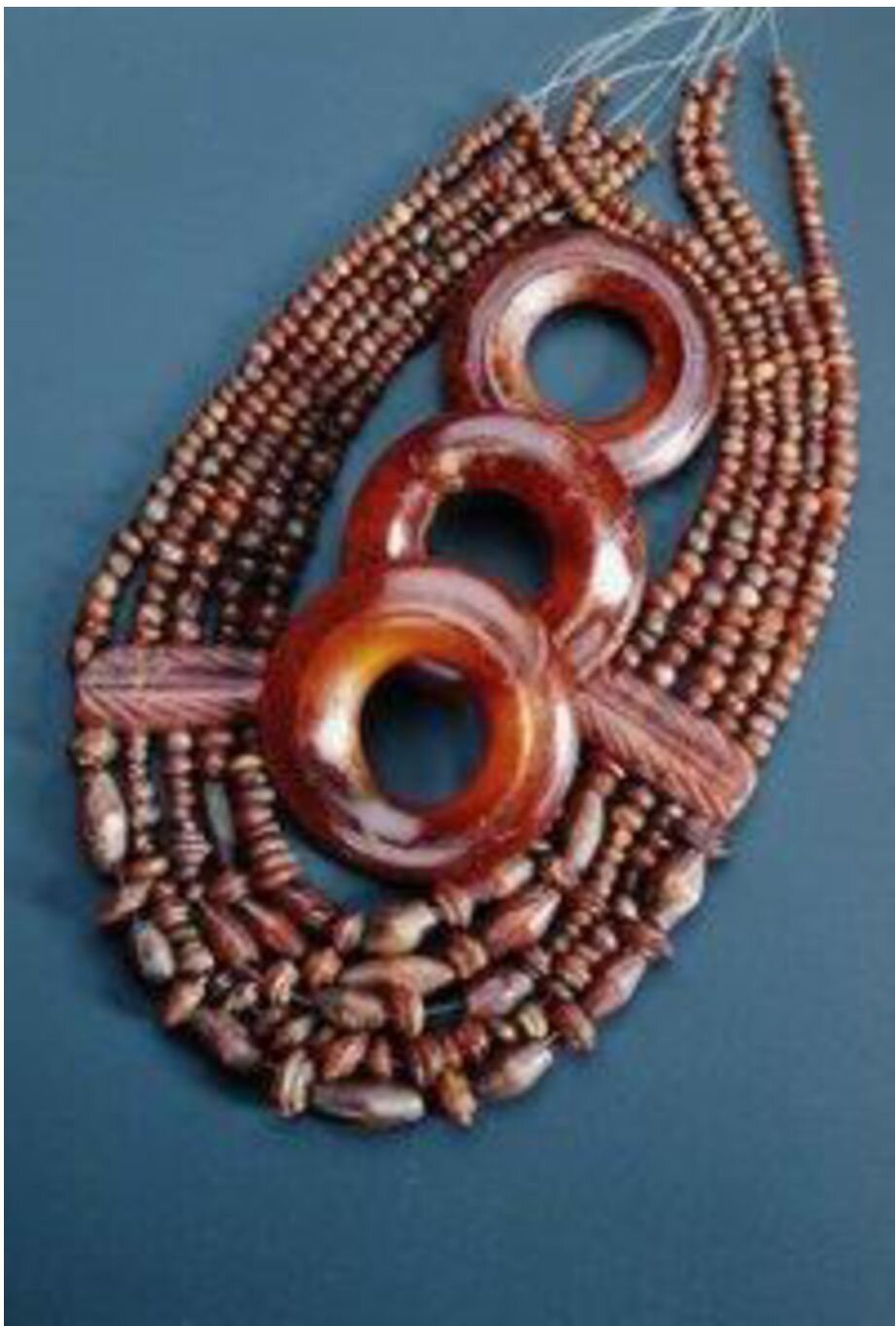Archaeological excavations in Germany have brought to light many amber objects from graves and depos from the Early Bronze Age (2200-1600 B.C.) to the Early Latène Age/Younger Iron Age (450- 30 B.C.). Based on the well-founded research work of Dr. Christa Stahl, we have entered all of the approximately 500 sites listed by her for the period between 2200 -30 BC in a map, with details of the amber objects excavated there (see map below).
It can be assumed that the graves containing amber objects belonged to women from wealthy families. Often jewellery such as amber beads, amber rings, amber slides, amber pendants etc. appeared there. They were very valuable at that time and often distinguished the owner during his lifetime. Both the beauty of amber, as well as its presumed magical protective properties have helped it gain its special significance.
Interestingly, the many burials of amber objects in tombs coincide with the beginning of bronze casting technology. Therefore, it is believed that bronze objects were a preferred medium of exchange for amber.
Necklace from the Early Bronze Age found in Halle-Queis (Saxony-Anhalt).
The reconstruction based on the found parts (about 3200 years old) results in a necklace consisting of two chains. The mostly rectangular amber beads are connected to each other by bronze rollers. This necklace was found in a grave of a wealthy woman in an early bronze-age cup, which was laid down as an offering to the gods and expectation of salvation for the woman.
Necklace from the early bronze age
Finding place: Halle-Queis (Saxony-Anhalt)
Photo: Juraj Liptàk
Jewellery from the older Iron Age found in Bavaria near Niedererlbach
In the Isar valley near Niedererlbach, archaeologists have found one of the richest women's graves from the 7th century BC. As a burial object, the wealthy woman wore a unique amber necklace with 480 amber beads. It has five strands held in place by so-called amber sliders. Several amber rings, which were attached to the chest area, were also found.
Jewellery from the older iron age
Finding place: Niedererlbach in Bavaria
Literature
Christa Stahl, Mitteleuropäische Bernsteinfunde von der Frühbronze-bis zur Frühlatènezeit. Ihre Verbreitung, Formgebung, Zeitstellung und Herkunft. Verlag J. H. Röll GmbH, 2006, Dettelbach
Der geschmiedete. Die weite Welt im Herzen Europas vor 3600 Jahren. Herausgegeben von Harald Meller Fotos von Juraj Lipták, © 2004 Landesamt für Denkmalpflege und Archäologie Sachsen-Anhalt – Landesmuseum für Vorgeschichte Halle Konrad Theiss Verlag GmbH, Stuttgart.
https://www.bavarikon.de, Archäologische Staatssammlung München - Bildnummer: GD 1999-367Archäologische Staatssammlung München - Inventarnummer: 1993,698c· Niedererlbach, Gde. Buch a.Erlbach, Lkr. Landshut, Reg.-Bez. Niederbayern ca. 650 - 600 v. Chr. L 3,3 cm (Schieber) / Material: Bernstein
https://de.wikipedia.org/wiki/Depot_ von_Queis

